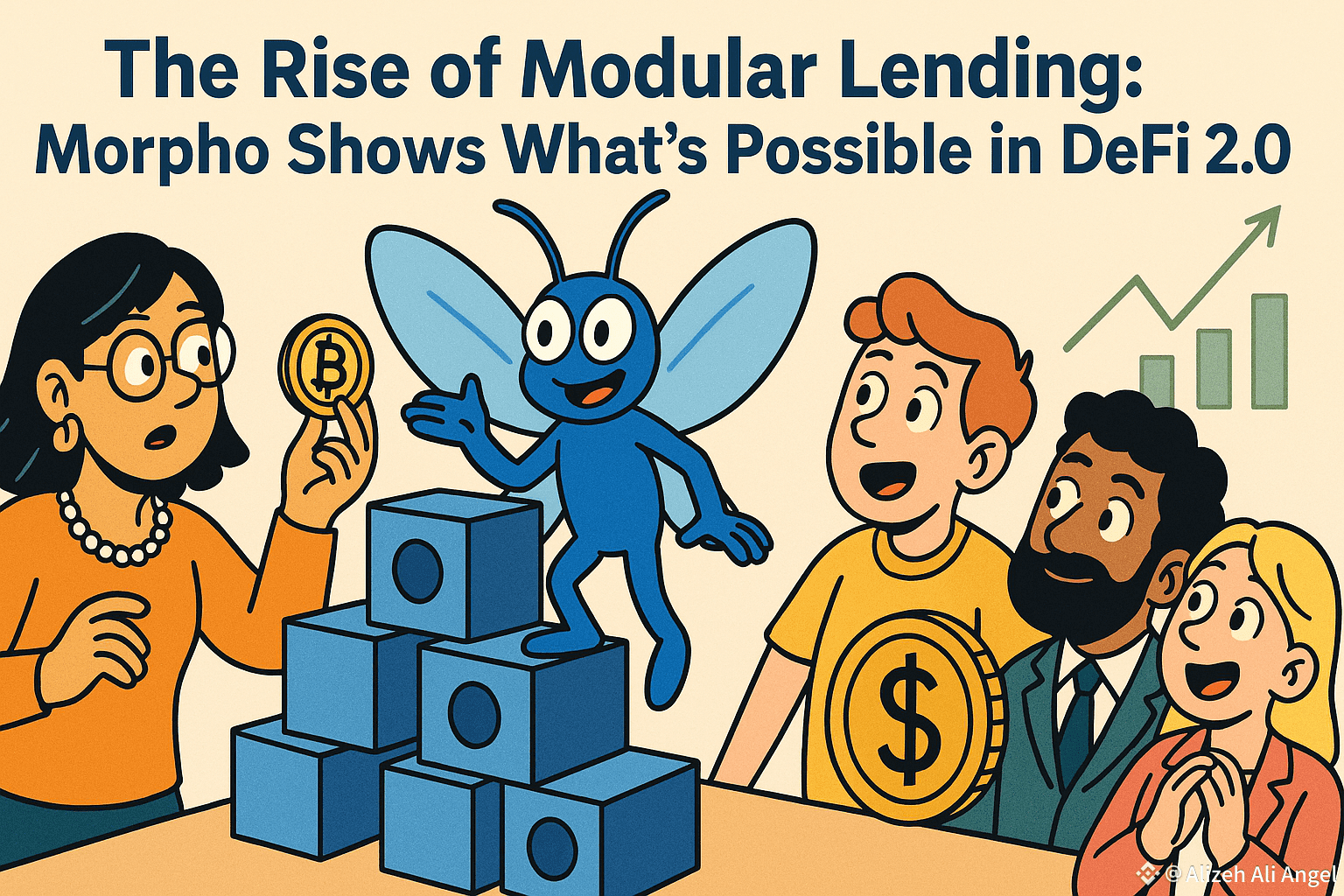Morpho began life as a kind of “overlay” on existing DeFi lending protocols: a layer that sat on top of the likes of Aave and Compound, matching lenders and borrowers more efficiently than pooled-liquidity models. Rather than throwing every deposit into a vast, shared pool where supply and demand get blurred, Morpho tried a simpler idea: peer-to-peer (P2P) matching whenever possible, and only routing any leftover supply or demand back through those legacy pools.

That design improved capital efficiency in a way that made sense, and it resonated. As DeFi matured, though, simply being a more efficient overlay wasn’t enough. Investors — especially institutions — started demanding something more: predictability, customization, and a more “modular” structure where parts could be plugged in independently.
Enter Morpho’s 2025 facelift: Morpho V2. With this upgrade, Morpho didn’t just optimize lending. It re-imagined what on-chain lending infrastructure could look like. Instead of a monolithic “everything bundled together” protocol, V2 provides a toolbox. You’ve got “Markets V2” — a global, intent-based credit market where users post explicit offers: specifying amount, rate, term, collateral terms. On the other side, you’ve got “Vaults V2,” which let curators, institutions or even advanced users pool funds under custom strategies, deploying those funds into loan offers governed by the vault’s parameters. The result: lending becomes modular, composable, and far more flexible.
What makes this shift important — and why the industry is calling it “DeFi 2.0” or even “modular lending” — is the unbundling of functions. Traditional DeFi lending pools forced you into a limited palette: fixed collateral types, interest-rate curves determined by simple formulas, and little room for bespoke terms. Modular lending tears down those constraints. It allows markets tuned for different risk tolerances, collateral types (crypto, stablecoins, real-world assets), durations, interest models — whatever fits the use case.
That flexibility doesn’t just benefit geeks fiddling with code. It matters for real-world adoption. Institutions evaluating on-chain credit want predictability. Fixed-rate, fixed-term loans — something long rare in DeFi — are now possible. And collateral can be more than just ETH or USDC: portfolios or even tokenized real-world assets become viable.
In many ways, this mirrors the broader shift in crypto: from wild experimentation to infrastructure building. The early years of DeFi were about showing “look — we can recreate banking without banks.” Today feels more pragmatic: “Let’s build rails, systems, and plumbing that can actually support scaled, long-term financial activity.” Morpho is positioning itself as one of those backbone rails.
I find this shift compelling — because the quieter changes often matter most. Back in 2021 or 2022, when I first paid attention to DeFi lending, it was all about yield chasing, pool-hopping, and watching token prices flip. But those days also came with illiquidity risks, sudden liquidations, highly volatile rates. As someone who dipped toes in those waters — sometimes got burned — I see modular lending as a kind of maturity: a chance to decouple the excitement from reckless risk-taking.
That said, it's not a silver bullet. Flexibility and customization come with complexity — and risk. Allowing multi-asset or portfolio collateral, for example, means institutions or vault managers have to do serious due diligence. And while modular design reduces some systemic risks, it can also spread out liquidity thin — especially if users fragment across many small, custom markets. That's a structural trade-off.
It’s also worth noting that while modular protocols like Morpho and Euler are gaining traction, the broader institutional wave in DeFi remains tentative. As some analyses point out, even permissioned, compliance-ready pools have so far drawn mostly crypto-native capital; traditional finance players are cautious, partly because legal frameworks and real-world asset tokenization remain murky.
Challenges aside, the timing finally feels right for modular lending to take off. The 2025 crypto landscape is way more stable, and the people investing in it have already been through the highs and lows. Developers are more experienced. Regulators — globally — are slowly inching toward frameworks. And there’s growing interest in bringing real-world assets on-chain: stablecoins, yield-bearing tokens, staking derivatives. For that, you need infrastructure that isn’t rigid. You need modularity.
That’s why, when I watch Morpho pushing forward, I don’t see hype. I see ambition. The ambition to build much of the plumbing for DeFi’s next phase — one where loans are as bespoke as traditional finance, but still happen on-chain, transparently, permissionlessly. If that vision succeeds, it could change how credit is issued, traded, and managed in a digitally native world.
Whether Morpho will become the backbone backbone — the “quiet giant” some call it — depends on adoption, execution, and risk-management. With V2 officially live and institutional tie-ins happening across the board, the late-2025 vibe is different — the ecosystem actually feels ready for modularity. It’s a real inflection point, and it deserves attention.




